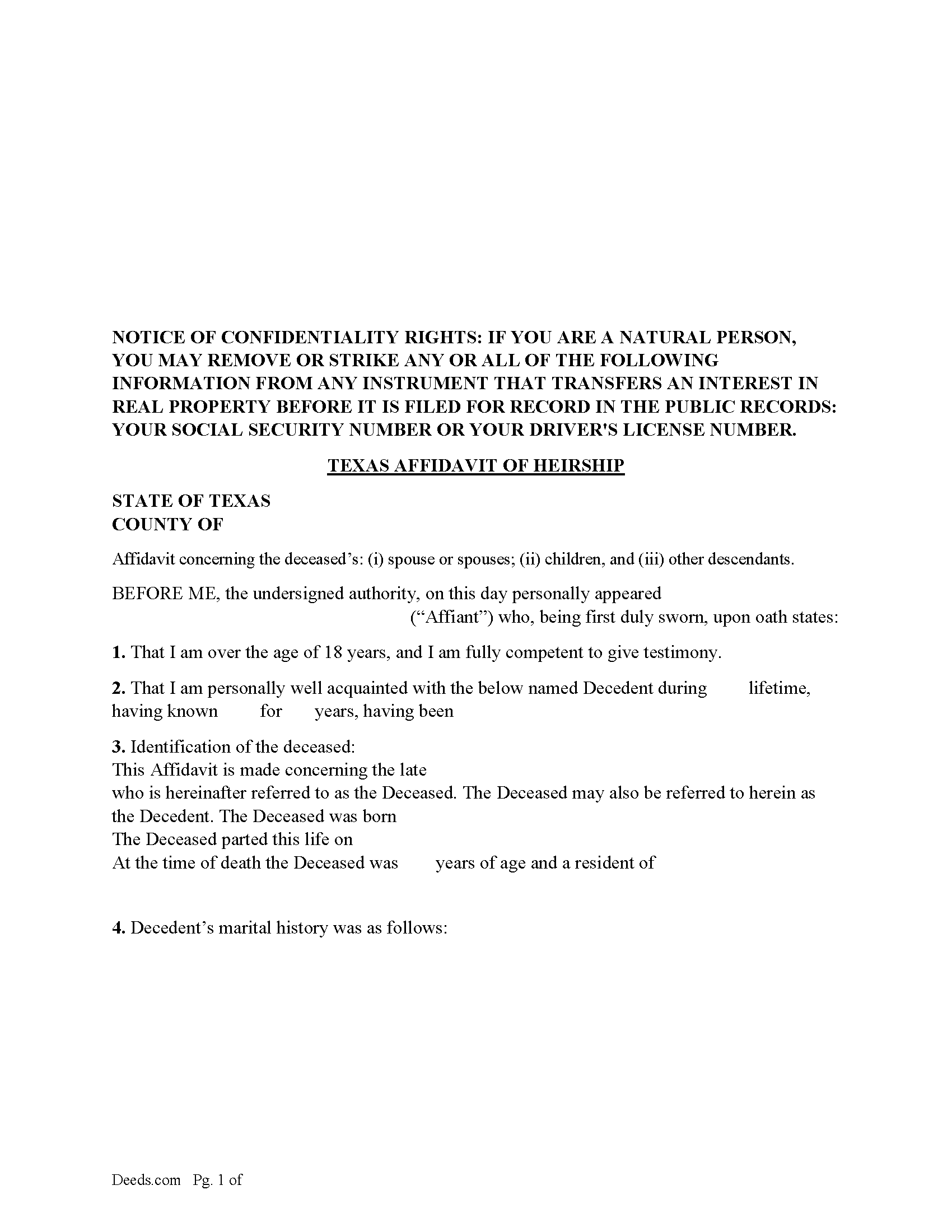Texas Texas Affidavit of Heirship Forms

Texas Texas Affidavit of Heirship Overview

How to Use This Form
- Select your county from the list on the left
- Download the county-specific form
- Fill in the required information
- Have the document notarized if required
- Record with your county recorder's office
This form is typically used when the deceased did NOT leave a will or estate plan. The Affidavit of Heirship is a sworn statement used to establish the heirs of a property, with a goal of putting the property in their name. Sometimes this form is used to bypass probate when the deceased left a will that leaves the property solely to the direct descendants of the deceased or when 4 years have passed since the death of the owner, the general time frame to probate a will in Texas. An Affidavit of Heirship can be filed anytime. An Affidavit of Heirship alone does not transfer property title. It identifies the heirs of the property.
General parameters for a Texas Affidavit of Heirship document:
No valid will, or if beneficiaries and/or heirs agree to disregard the will.
Only real estate needs to be transferred to heirs.
The deceased does not have any debts.
No administration of estate required.
(Texas Affidavit of Heirship Package includes form, guidelines, and completed example)
Important: County-Specific Forms
Our texas affidavit of heirship forms are specifically formatted for each county in Texas.
After selecting your county, you'll receive forms that meet all local recording requirements, ensuring your documents will be accepted without delays or rejection fees.
How to Use This Form
- Select your county from the list above
- Download the county-specific form
- Fill in the required information
- Have the document notarized if required
- Record with your county recorder's office
Common Uses for Texas Affidavit of Heirship
- Transfer property between family members
- Add or remove names from property titles
- Transfer property into or out of trusts
- Correct errors in previously recorded deeds
- Gift property to others